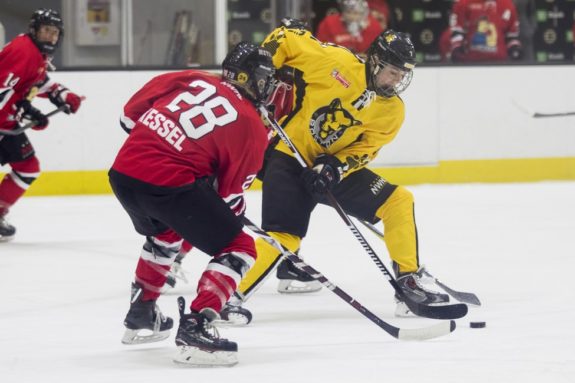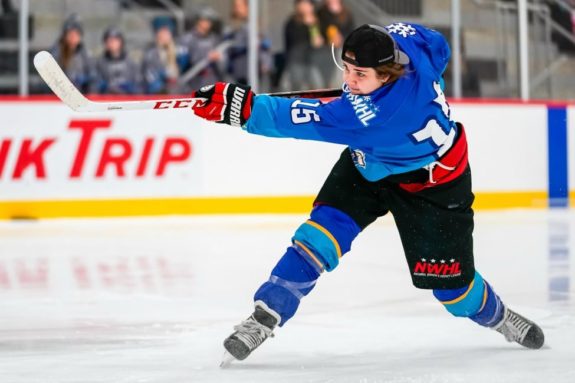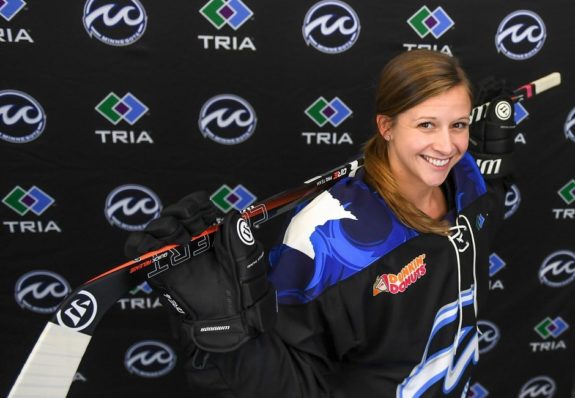Last week the NWHL announced the sale of their Boston-based team, the Boston Pride. The buyers of the founding team were a group of investors spearheaded by Miles Arnone, a managing partner at Cannons Capital. Overall, the acquisition sparks a positive point for the league after, earlier in the year, 200 female hockey players announced they wouldn’t be playing in a league in North America this season.
Arnone has been Boston-based for the past 30 years and has high aspirations for both the team and the sport of women’s hockey. Arnone’s background ranges from investments to engineering with a focus on startups. The latter could be critical to building a successful product in Boston. Despite being in existence for four seasons, the NWHL and the Pride are still very much in an incubation stage as professional sports entities.
“My investors and I believe in the NWHL, and we are honored to take on the responsibility of leading the Boston Pride during this important era of growth for women’s sports. We will build the Pride into a world-class team and an innovative and thoughtful business venture that demonstrates the power of professional women’s hockey and the value of the game’s remarkable athletes,” said Arnone in the league press release.
Boston Pride Sale Could Spark Investment
Given the fact that there are serious questions regarding the long-term financial viability of the league, and the 200 players refusing to play in North America this season due to a lack of a living wage, one might decline an investment into the league at this time. The fact that Arnone and his group have stepped in at this time does send a vote of confidence in the league.

This investment into the league could spark other outside interests to bring money into the sport. Now that the CWHL has ceased operation, the NWHL has become the only game in town, so to speak. The sale of the Boston Pride is a major step for the league given that this is their first full sale of a franchise to a private entity. But even with Arnone stepping in, there are still serious questions that haven’t been answered.
Related: Bruins Ownership Change Could Spark NHL Power Struggle
One of the major problems that the 200 players and their advocacy organization, PWHPA, have outlined is the lack of a living wage in women’s hockey at the moment. The NWHPA salary cap which is at $150,000 according to ESPN for this upcoming season simply isn’t high enough for the athletes to play full-time. That number is up $50,000 from last season, a 33% year-over-year increase.
Breaking that down to active players, 17 players dressed per game and that drills down to just $8,000 per player for a six-month season. Players that support the PWHPA have taken matters in their own hands looking to find a solution.
My solution, of course, is growing topside sales while generating revenue through sponsorships, fan growth, and other sources of revenue. While that sounds incredibly simple, it is, in fact, a very difficult thing to do and scale-out.
Players want a livable wage for their work, and that is a fair ask. The problem is, the league has to bring in enough revenue to be capable of doing that. Currently, in the NWHL, there is a 50/50 split of all sponsor-related revenue between the league/owners and the players.

Only one team in the league turned a profit last season, and, as wages rise, the league and the teams have the tall task of scaling revenue. Selling a team off should add some cash into the league’s pockets for expansion, but the bottom line is fan engagement. Teams have to draw fans, players have to promote the games, and if a market isn’t working, it’s certainly okay to admit that and shift focus into a new market.
Related: NHLPA Declining CBA Opt-Out A Win For Fans
Could Premier Lacrosse League Provide Blueprint?
Even in Major League Soccer, roughly half the teams in the league operate at a loss despite franchises going for $200 million a pop in expansion markets. The question for the NWHL is how do they generate hype, drive media coverage, and get fans out to games? And the bottom line that I continue to come back to on this is the need for a one-league solution.

Despite the CWHL folding, the 200 players in the PWHPA have turned attention their way with exhibition games throughout North America. They have the stars in Hillary Knight, amongst others, and have generated a nice head of steam. Overall they have attracted a series of big-name sponsors like Bauer, Budweiser, and the NHLPA to back them. If they find out the answer in developing a women’s hockey product that generates a livable wage, then that should be applauded. Maybe a grassroots exhibition-style setup like the Premier Lacrosse League (PLL) is the way to go about women’s hockey in North America
What the PLL did was draft out teams, and, instead of locating them in different cities, they made their entire league a traveling tour of sorts hitting major cities across the United States. This has allowed them to see how different markets reacted to their product and potentially scope out future permanent bases for their league.
Of course, the PLL had the backing of NBC which made the league instantly accessible to millions across the country. Could this work in women’s hockey? The best the sport has to offer traveling arena to arena? Maybe – the PWHPA’s Dream Gap Tour is having a go of it starting in Toronto this weekend and then hitting four more cities along the way. At this point their attempt is more of an advocacy-type series, but who says it can’t be more than that?